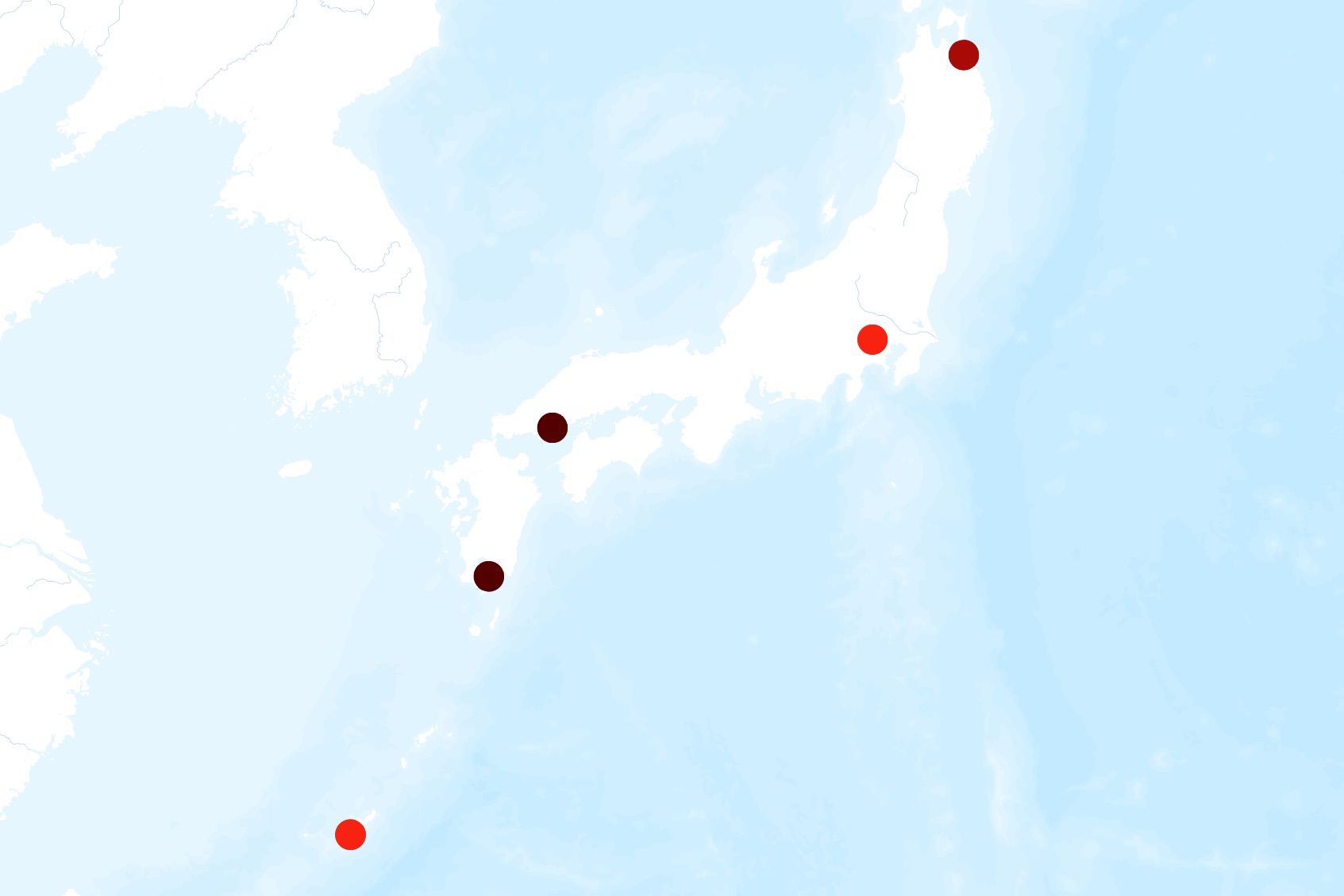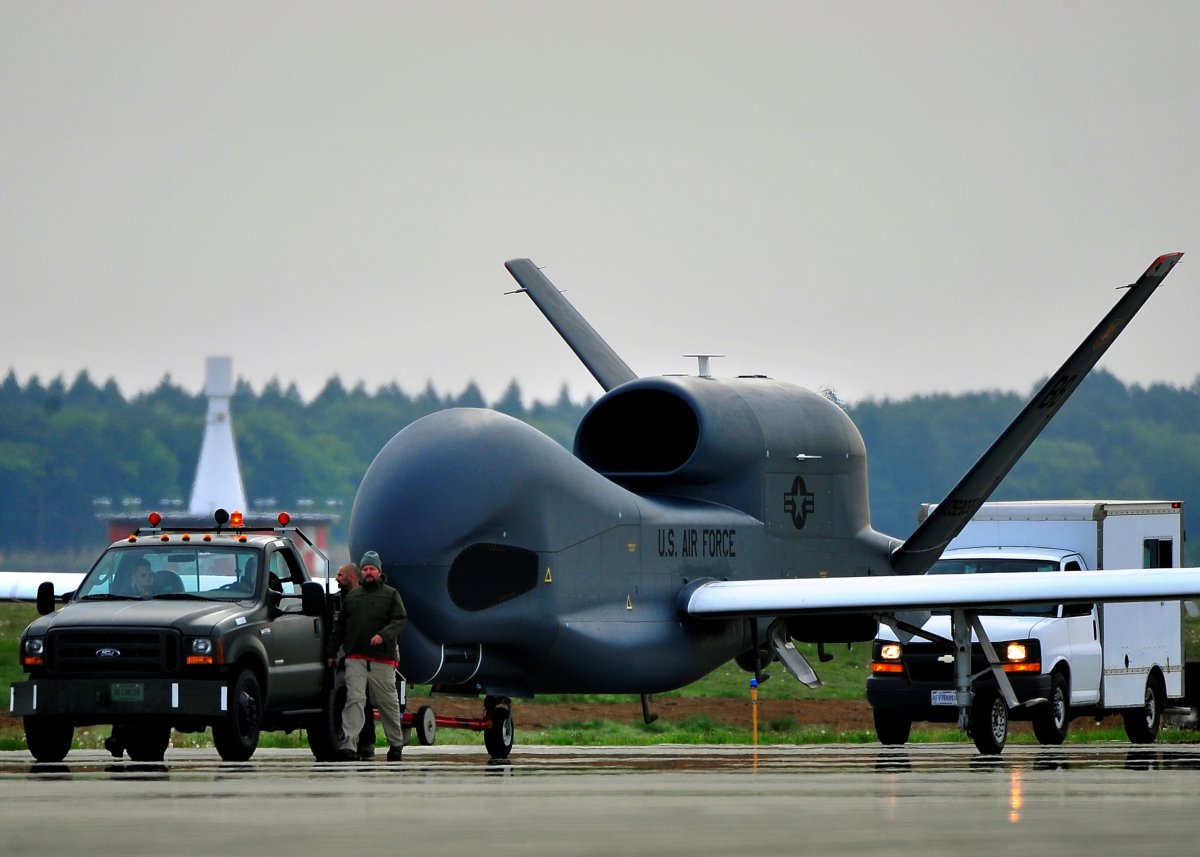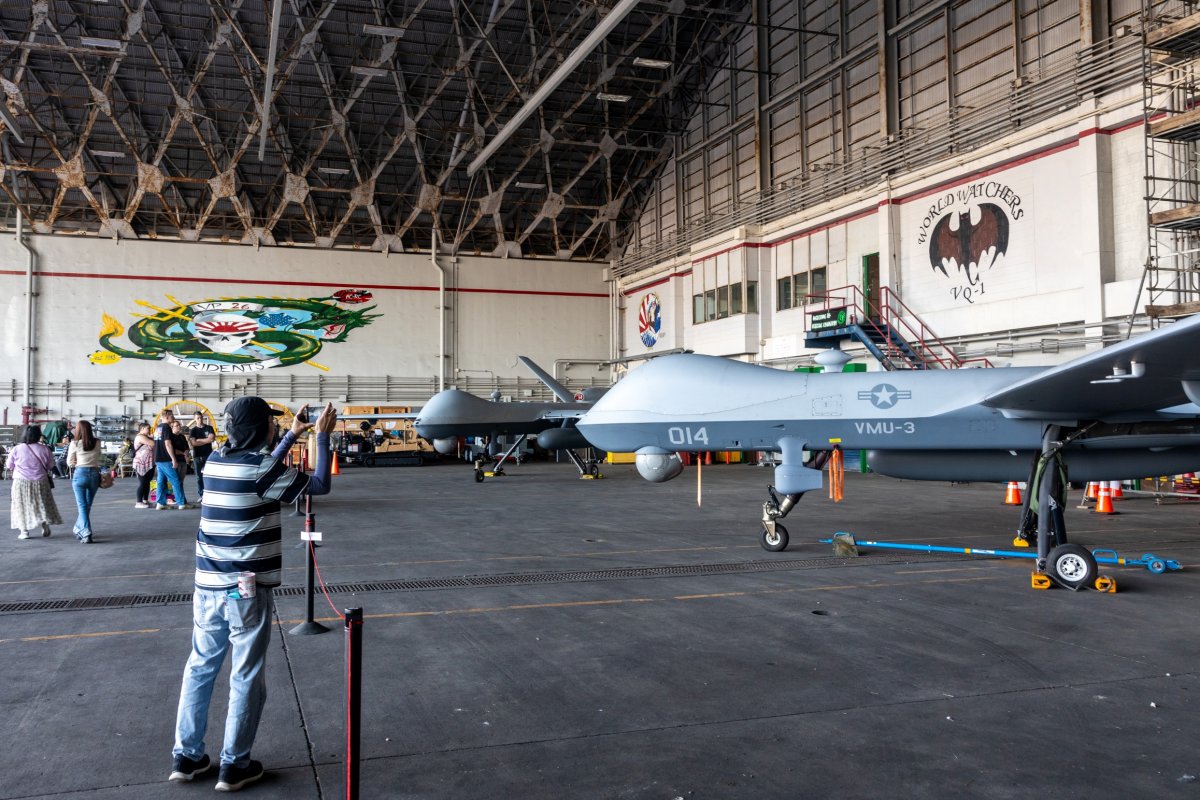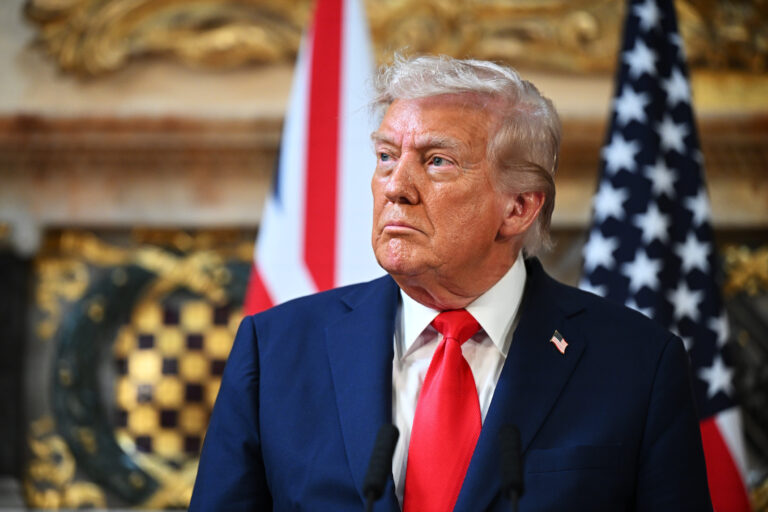
The United States further expanded the presence of military drones in Japan, its key ally in the Western Pacific, to monitor adversaries—Russia, China and North Korea.
Lieutenant Commander Chloe Morgan, a U.S. Indo-Pacific Command spokesperson, told Newsweek that unmanned aircraft provide “continuous intelligence, surveillance and reconnaissance capabilities” that enhance security across the Indo-Pacific theater.
Newsweek has e-mailed the Russian and Chinese foreign ministries for comment. North Korea‘s embassy in Beijing did not immediately respond to a request for comment.
Why It Matters
Facing growing threats posed by Russia, China and North Korea, the U.S. military has forward-deployed some of its most-capable units—including missile-armed destroyers, stealth fighter jets and unmanned aircraft—in Japan as part of its 50,000-strong forces.
Japan—formed by four main islands and a number of southwestern outlying islands—plays a key role in containing America’s adversaries under the island-chain strategy, aiming to project U.S. and allied military power to deter and defend against aggression.
Tokyo has territorial disputes with Beijing and Moscow over the Senkaku Islands and the Northern Territories, respectively. North Korea frequently test-fires missiles toward the Japanese archipelago, prompting the U.S. ally to strengthen its defense posture.
Latest Deployment
Japan’s Defense Ministry announced on August 29 that American RQ-4B Global Hawk drones—operated by the U.S. Air Force and deployed from Andersen Air Force Base in Guam—will be stationed at Misawa Air Base in September for about a month.

Staff Sgt. Nathan Lipscomb/U.S. Air Force
Citing its U.S. counterpart, Japan’s Defense Ministry said the drone deployment aims to further strengthen intelligence, surveillance and reconnaissance activities around Japan.
When reached for comment, the U.S. Indo-Pacific Command spokesperson confirmed last week that a Global Hawk drone is deployed at Misawa Air Base but declined to provide further details regarding aircraft movements, citing operational security.
The U.S. Air Force says the Global Hawk is classified as a “high-altitude, long-endurance, remotely piloted aircraft.” Equipped with a sensor system, it provides an “all-weather, day-or-night” intelligence, surveillance and reconnaissance capability.
Meanwhile, a Japanese Defense Ministry document dated October 2024 shows that a fleet of three Global Hawk drones was deployed at Yokota Air Base in Japan in May 2023. The U.S. drones later temporarily returned to their home station in Guam.
While a Global Hawk drone is deployed at Misawa Air Base, a recent Defense Ministry document—shared by the Tokyo Metropolitan Government on social media on August 28—still lists the drone’s deployment at Yokota Air Base, near Tokyo, as “ongoing.”
Persistent Presence
In addition to the aforementioned locations in Japan, the U.S. currently deploys two other types of drones in the country, a Newsweek map shows. The drones—operated by the Air Force, the Marine Corps and the Navy—are stationed at Kadena Air Base.
Located on Japan’s southwestern island of Okinawa, Kadena Air Base is a major U.S. air power hub in the contested Western Pacific, as it is the closest American air base to Taiwan, a self-ruled island claimed by China despite never having been governed by it.
According to documents provided by U.S. and Japanese military authorities, a fleet of eight MQ-9A Reaper drones—operated by the U.S. Air Force—was deployed at Kanoya Air Base on Kyushu, Japan’s southernmost main island, in November 2022.
The drone fleet was relocated to Kadena Air Base in November 2023. As of last month, the deployment was listed as “ongoing” in a Japanese Defense Ministry document.
Meanwhile, since August last year, the U.S. Marine Corps has deployed its own Reaper drones—up to six aircraft—at Kadena Air Base. The deployment, originally scheduled for a year, has been extended indefinitely, according to the same Japanese document.
In April, Japan’s Defense Ministry announced that an unspecified number of MQ-4C Triton drones—operated by the U.S. Navy and designed for long-endurance maritime patrol—will be deployed at Kadena Air Base, with no end date set for the deployment.

Gunnery Sgt. Scott Smolinski/U.S. Marine Corps
The U.S. Navy previously deployed the MQ-4C Triton aircraft at Marine Corps Air Station Iwakuni between July and October 2022, according to a map provided by Japan’s Defense Ministry.
What People Are Saying
The U.S. Air Force’s 18th Wing said in a press release in October 2023: “Kadena’s strategic position makes it an invaluable location to stage [intelligence, surveillance and reconnaissance] operations, enabling access to numerous potential flashpoints across the Indo-Pacific region.”
Japan’s defense white paper 2025 read: “In addition to Japan’s own efforts, cooperation and collaboration with our ally and like-minded countries is critical. The Alliance with the United States is a key pillar of our national security policy and the cornerstone of peace and stability in the Indo-Pacific region.”
What Happens Next
It remains to be seen whether the U.S. military will deploy additional manned and unmanned aircraft to Japan, strengthening the alliance’s posture in Northeast Asia.




